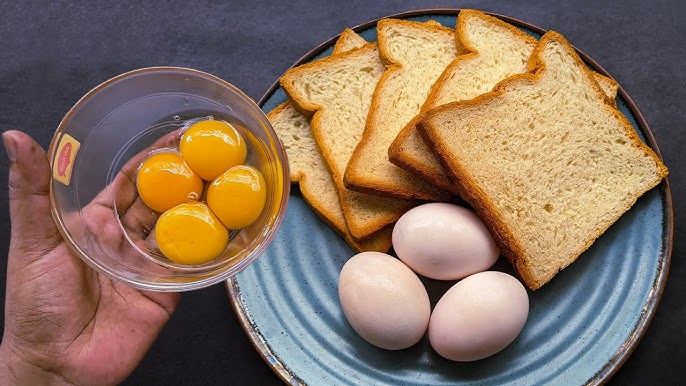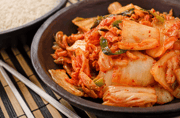
Remember when a 'full breakfast' actually meant full? Those days when two eggs automatically meant two pieces of toast, and you didn't need to negotiate with the waiter for basic bread? Well, if you've been scratching your head at increasingly skimpy breakfast serves across Australian cafes, you're not alone.
A frustrated Canberra diner recently took to Reddit to vent about what they called a 'disturbing trend' cafes serving hearty breakfast dishes with just one measly slice of bread.
With coffee prices in some regional areas reaching close to $10 per cup and food costs contributing significantly to the 3.0 per cent inflation rate as of August 2025, both diners and cafe owners are feeling the pinch.
'If there are two eggs I want two slices of bread (unless it's a large slice...)'
When breakfast portions don't add up
The original complaint struck a nerve with fellow diners. 'Been a pet hate of mine for a while. I can't think of a more first world problem, but still. Full breakfast should come with two slices of toast,' one commenter agreed.
Others were more blunt about the economics: 'It's one reason I balk at paying $23+++ for a spoon of Hollandaise sauce, a poached egg and a single piece of toast.'
But here's where it gets interesting—this bread-skimping trend is happening against a backdrop of massive food waste in the hospitality industry.
Research shows an estimated 65 per cent of food is wasted in restaurants and cafes during the cooking process, while 29 per cent of Australians don't finish their meals when dining out, leaving approximately 21 per cent of their food uneaten due to oversized portions.
The numbers behind cafe culture
Over 55,700 cafes and restaurants operate across Australia as of 2024, up from 41,570 in 2017
The majority employ between 1-20 people, averaging 9 employees per venue
Restaurants can waste up to 2.5kg of food per customer per week
The economics behind the empty plate
The reality is that cafes are caught in a cost-cutting squeeze that's affecting everything from butter portions to sauce servings.
Rising operational costs including higher wages, rent, and utilities have added pressure to increase prices across the hospitality industry.
For many venues, trimming bread serves represents a simple way to shave costs without raising menu prices that might scare away customers.
One Reddit user highlighted the broader trend: 'Even worse are the prices 'extras' such as $5 each for an extra egg, spinach (which always used to be part of Eggs Benny) etc.'
This nickel-and-dime approach reflects an industry under pressure, particularly as cost-of-living pressures have led to increased intention among Australians to consume coffee at home instead of in cafes.
The waste paradox
Here's the kicker that makes this whole bread shortage even more frustrating: the hospitality sector generates over 1.2 million tonnes of food waste annually, yet many venues are skimping on basic bread serves that cost cents to provide.
Australia wastes more than 7.6 million tonnes of food each year—enough to fill the Melbourne Cricket Ground nine times—costing the economy over $36.6 billion despite 70 per cent being perfectly edible.
So while cafes pinch pennies on bread, they're simultaneously throwing away enormous quantities of perfectly good food.
Did you know?
Did you know?
The average Australian family throws away $970 worth of edible food per person annually, yet many are now paying extra for basic breakfast components that used to be included as standard.
What you can reasonably expect
The defence from some diners that 'many people only eat one slice anyway' misses the point entirely.
When you're paying premium prices for breakfast—and let's face it, $20-plus for eggs Benedict isn't pocket change for anyone, especially those on fixed incomes—you should get what's traditionally expected.
A proper eggs Benedict or big breakfast has historically come with adequate bread to match the other components.
If cafes want to reduce waste, they should ask customers about portion preferences, not automatically downsize everything while maintaining full prices.
Fighting back with your fork (and wallet)
Getting better value when dining out:
- Ask about serving sizes when ordering—don't be shy about requesting extra bread if needed
- Check if venues charge for 'extras' that used to be standard inclusions
- Look for cafes that advertise generous portions or traditional serves
- Consider sharing dishes if portions are large but unbalanced
- Vote with your feet—support venues that provide fair value
Some savvy diners suggested looking for cafes that still understand value. Regional areas might charge more due to higher operating costs, but many still maintain traditional serving standards compared to trendy urban spots focused on Instagram presentation over substance.
Smart breakfast strategies
- Research venues beforehand through reviews mentioning portion sizes
- Don't hesitate to ask for modifications or clarifications when ordering
- Consider venues that advertise 'generous portions' or 'traditional breakfasts'
- Factor in total value, not just base menu prices
The bigger picture
This bread battle reflects broader changes in Australian dining culture. What our parents and grandparents considered standard breakfast fare has been gradually whittled away, often disguised as 'modernisation' or 'refined presentation.'
But when the fundamentals of a dish—like having enough bread to soak up your egg yolks—get compromised for cost-cutting, it's worth pushing back.
The irony is that truly successful cafes understand that generous, well-balanced serves create happy customers who return regularly and recommend the venue to others. Skimping on basics like bread might save a few cents per serve, but it can cost far more in customer satisfaction and loyalty.
What This Means For You
The solution isn't complicated—cafes need to either provide traditional serves at current prices, or be transparent about what's included and offer reasonably-priced additions. Meanwhile, diners can make their expectations clear and support venues that still understand the value equation.
What's your experience with shrinking breakfast portions? Have you found cafes in your area that still provide proper traditional serves, or are you seeing the same cost-cutting measures creeping in everywhere?
Primary Source
https://www.kidspot.com.au/lifestyl...d/news-story/05e270e08cfa35741b6592ec790245ed
Why are coffee prices rising in Australia in 2025 | Torrens University
Cited text: In regional Australia, some coffee prices have reached close to $10 per cup.
Excerpt: With coffee prices in some regional areas reaching close to $10 per cup
https://www.torrens.edu.au/stories/blog/hospitality/why-are-coffee-prices-rising-in-australia
Monthly Consumer Price Index Indicator, August 2025 | Australian Bureau of Statistics
Cited text: The largest contributors to the annual movement were Housing (+4.5 per cent), Food and non-alcoholic beverages (+3.0 per cent), and Alcohol and tobacco (+6.0 per cent).
Excerpt: food costs contributing significantly to the 3.0 per cent inflation rate as of August 2025
https://www.abs.gov.au/statistics/e...consumer-price-index-indicator/latest-release
Food Waste In Australia: Which Industries Produce The Most?
Cited text: Hospitality It is estimated that a shocking 65 per cent of food is wasted in the hospitality industry.
Excerpt: Research shows an estimated 65 per cent of food is wasted in restaurants and cafes during the cooking process
https://www.enrich360.com.au/news/food-waste-in-australia-which-industries-produce-the-most
Food Waste Statistics from Australia to Remember in 2024
Cited text: About 5 per cent of food is wasted in restaurants due to spoilage, while another 65 per cent is thrown away during the cooking process.
Excerpt: Research shows an estimated 65 per cent of food is wasted in restaurants and cafes during the cooking process
https://accumulate.com.au/food-waste-statistics-from-australia-to-remember/
Food Waste Statistics from Australia to Remember in 2024
Cited text: When eating out, 29 per cent of Australians still need to finish their meals, leaving approximately 21 per cent of their food uneaten. This issue stems from serving s...
Excerpt: 29 per cent of Australians don't finish their meals when dining out, leaving approximately 21 per cent of their food uneaten due to oversized portions
https://accumulate.com.au/food-waste-statistics-from-australia-to-remember/
Australia: cafés and restaurants in operation 2024 | Statista
Cited text: Australia's café and restaurant landscape has shown consistent growth in recent years, with over 55,700 cafés and restaurants in operation across the ...
Excerpt: Over 55,700 cafes and restaurants operate across Australia as of 2024, up from 41,570 in 2017
https://www.statista.com/statistics/1244323/australia-number-cafes-and-restaurants-in-operation/
CAFÉ SECTOR ACTION PLAN REPORT 2024
Cited text: As of June 2022, there were 53,866 cafés and restaurants in Australia making up over half of all food service businesses nationally · (ABS, 2023) The ...
Excerpt: The majority employ between 1-20 people, averaging 9 employees per venue
https://endfoodwaste.com.au/wp-content/uploads/2024/10/CAFE-LAB-REPORT-2024-Bookmarked.pdf
Food Waste Statistics from Australia to Remember in 2024
Cited text: There can be as much as 2.5 kilograms of wasted food per cover per week in a restaurant.
Excerpt: Restaurants can waste up to 2.5kg of food per customer per week
https://accumulate.com.au/food-waste-statistics-from-australia-to-remember/
Why are coffee prices rising in Australia in 2025 | Torrens University
Cited text: The rising operational costs for cafes such as higher wages, rent, and utilities have added pressure to increase coffee prices.
Excerpt: Rising operational costs including higher wages, rent, and utilities have added pressure to increase prices across the hospitality industry
https://www.torrens.edu.au/stories/blog/hospitality/why-are-coffee-prices-rising-in-australia
Why are coffee prices rising in Australia in 2025 | Torrens University
Cited text: The hospitality industry faces rising wages and labour shortages, which increases the operational expenses for cafes and, consequently, the price of c...
Excerpt: Rising operational costs including higher wages, rent, and utilities have added pressure to increase prices across the hospitality industry
https://www.torrens.edu.au/stories/blog/hospitality/why-are-coffee-prices-rising-in-australia
Australia: cafés and restaurants in operation 2024 | Statista
Cited text: Nonetheless, although the country observes high coffee consumption levels, cost-of-living pressures have led to a desire to reduce spending on takeout...
Excerpt: cost-of-living pressures have led to increased intention among Australians to consume coffee at home instead of in cafes
https://www.statista.com/statistics/1244323/australia-number-cafes-and-restaurants-in-operation/
CAFÉ SECTOR ACTION PLAN REPORT 2024
Cited text: The latest figures from the 2021 · report (FIAL, 2021) show a 275 per cent increase in the amount of waste generated by the hospitality sector from 2019-2021....
Excerpt: the hospitality sector generates over 1.2 million tonnes of food waste annually
https://endfoodwaste.com.au/wp-content/uploads/2024/10/CAFE-LAB-REPORT-2024-Bookmarked.pdf
Food Waste Facts | Foodbank Australia
Cited text: Australia currently creates more than 7.6 million tonnes of food waste each year—enough to fill the Melbourne Cricket Grounds nine times. This is co...
Excerpt: Australia wastes more than 7.6 million tonnes of food each year—enough to fill the Melbourne Cricket Ground nine times—costing the economy over $36.6 billion despite 70 per cent being perfectly edible
https://www.foodbank.org.au/food-waste-facts-in-australia/
Food Waste Statistics from Australia to Remember in 2024
Cited text: The Fight Food Waste CRC found that annually, Australian families throw away $970 worth of edible food per person.
Excerpt: The average Australian family throws away $970 worth of edible food per person annually
https://accumulate.com.au/food-waste-statistics-from-australia-to-remember/







